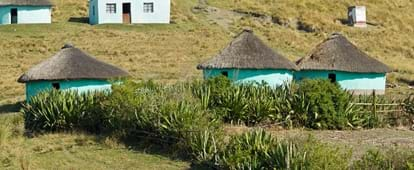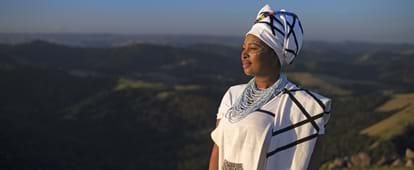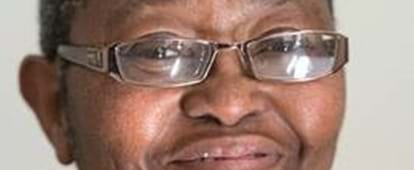By creating an account, I agree to the
Terms of service and Privacy policy
Choose your country and language:
Africa
Americas
Asia Pacific
Europe
TThe AmaXhosa are one of four nations, known as Nguni, that are found in South Africa. The other three are AmaNdebele, AmaSwazi and AmaZulu. The AmaXhosa settled in the Eastern Cape and over time spread to the Western Cape.
The Xhosa nation is made up of tribes and clans. Clans are groups of families with different surnames but sharing one clan name. For example, Radebe is the clan, but the nation is called AmaHlubi. The clan name is the name of the first ancestor or family that gave birth to the clan. Clans make up tribes and tribes make up nations.
IsiXhosa is the language spoken and has clicks, for example the X, Q, KR and CG in the English language are letters that form the clicks. Storytelling plays a big part in the culture, and even the music is a form of storytelling. Xhosa dance is something of a wonder, especially the dance form called umtyityimbo, which requires dancers to make their upper bodies tremble and vibrate while dancing.

XXhosa traditional wear is made from a cotton woven into unique styles and patterns. The women wear white dresses that are decorated with black bias binding at the hem and neck, and a headdress made up of two or three different materials of various colours. The colours of the headdresses represent the different areas they come from.
Married women wear long aprons over their dresses, which are decorated with black bias binding, then, over the whole outfit they wear a cloak made from the same material. This outfit is known as isikhakha. Women carry a sling bag called inxili, which is used like a handbag.
Jewellery is a must for Xhosa women. Traditional Xhosa jewellery such as earrings, necklaces and traditional collars are made from beads. Collars range in size - some go as far as the shoulders, while others flow over the shoulders halfway down the upper arm. The beads come in all colours of the rainbow and when made with primary colours such as red, blue, dark blue, white and, yellow, they look dazzling.
Xhosa men wear wraparound skirts that run down from the waist to the feet. They throw a long scarf over one shoulder, which also serves as a cloak when it gets cold. They wear headdresses made from beads or cloth, depending on the customs of their tribes.
Stick fighting is an art that Xhosas learn from an early age when they are out in the veld (pastures) herding cattle. This is where the training starts because they will use this skill to defend themselves and their families. Most of the sticks that Xhosa men carry were given to them at their circumcision ceremony.
Face painting, or umchokozo, plays a big role in Xhosa culture, and women decorate their faces with white or yellow ochre, and use dots to make patterns on their faces. The decorations are sometimes painted over their eyebrows, the bridge of their noses, and cheeks.
AmaXhosa, like all Africans, believe in ancestors, through which they communicate with God. When a child is born a ritual called imbeleko is performed to introduce a child to their ancestors and vice versa. When a boy reaches 18, he will be circumcised, an act that is seen as a transition from boyhood to manhood. Young men are mentored by elders in the bush and are taught about manhood. This ritual is meant to prepare them for life, leadership and being custodians of their culture.

DDuring the first part of the ritual the young men cover their bodies with white ochre and in the last stages of the ritual they use red ochre. Ochre acts as a deodorant and protects the skin from bacteria and infections. When the young men finish their stint in the bush they wash off all the ochre, revealing skin that is smooth and soft. Girls also have their ritual of transition from girlhood to womanhood, which is called intonjana.
When a young man is ready to marry, his family will go to the woman’s family and ask for her hand on his behalf. Before they marry, a dowry is given to the bride’s family as a way of thanking them for bringing up this young woman who will soon leave her home and become part of her fiancé’s family for life.
When people die, rituals of death are performed. If the head of the family dies, his spirit will be accompanied by a bull, which will be slaughtered at his funeral. A year after his death another bull will be slaughtered to bring his spirit back home to live among his family to guide and protect them. When someone’s spouse dies, they need to observe a one-year mourning period. Women wear black or traditional outfits depending on her family’s beliefs, while men either wear a button covered with a black cloth, or a small piece of black cloth pinned to his shirt sleeve or the front of his shirt. When the mourning period ends, a ritual of cleansing is performed.

AAbout the author
Fatima Dike is a Cape-Town based playwright, director and teacher, and is well versed on Xhosa culture. Her writing career started in 1976 and spans decades of written plays and directing work. She has been a writer in residence at The Open University in Milton Keynes, London and has lectured at John Carroll University in Cleveland Ohio. Since 2005 she has been a member of SIT, an international organisation that brings university students from the US to South Africa to study multiculturalism. They are hosted by black families in Langa where they live as family members and are encouraged to speak Xhosa as much as possible. Fatima is also a founder member of a multi-disciplinary company called Umbonowethu, which teaches drama, photography and dance.
Related articles

|Terms and conditions|Disclaimer|Privacy policy|Terms and Conditions-Valentines Campaign
